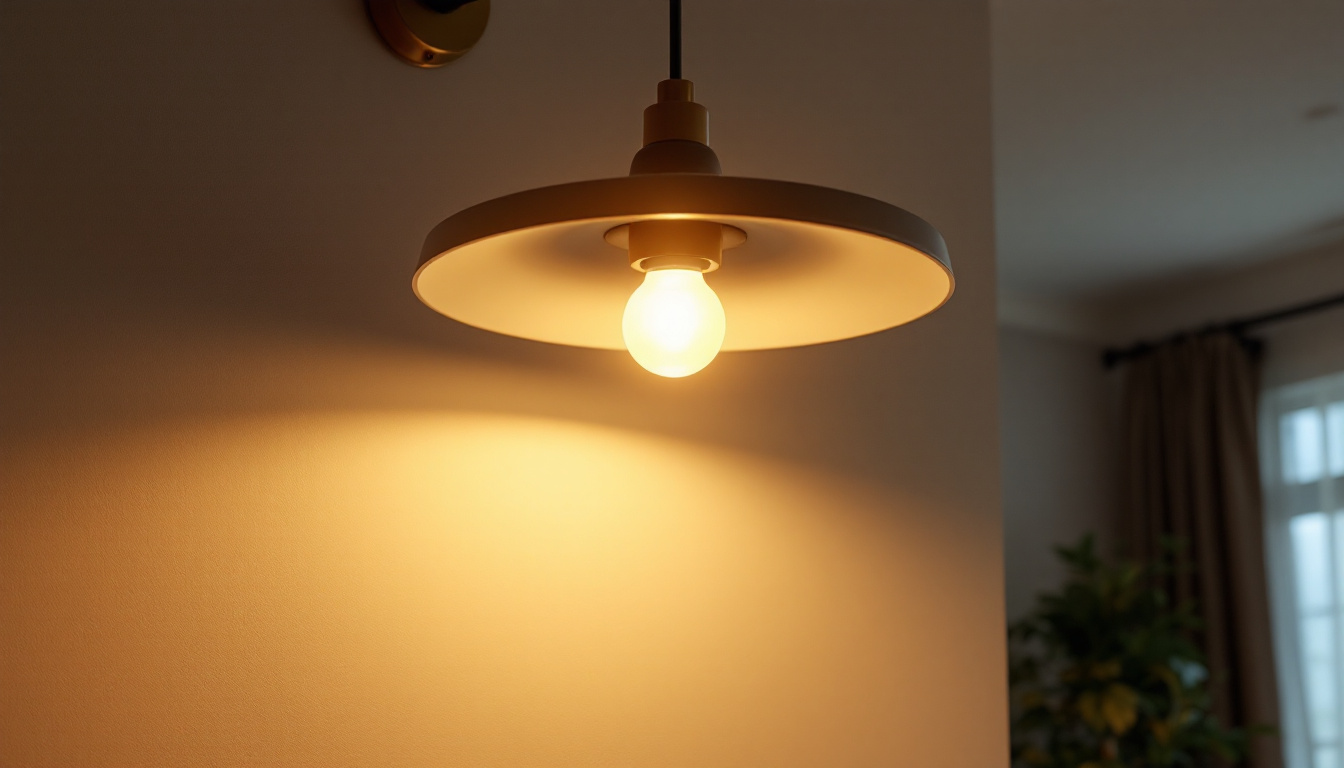
In the realm of commercial lighting, efficiency and effectiveness are paramount. One often-overlooked aspect of warehouse operations is the role of warehouse fans in enhancing overall performance. These fans not only contribute to a better working environment but also play a significant role in optimizing lighting conditions. For lighting contractors, understanding the synergy between warehouse fans and lighting systems can lead to improved project outcomes and client satisfaction.
Warehouse fans are designed to circulate air in large spaces, ensuring that temperature and humidity levels remain stable. This is particularly important in warehouses where lighting systems can generate heat, potentially affecting both the lifespan of the lights and the comfort of the workforce. By integrating warehouse fans into lighting projects, contractors can offer comprehensive solutions that address both illumination and climate control.
Moreover, the strategic placement of warehouse fans can significantly enhance the effectiveness of lighting fixtures. For instance, by directing airflow towards areas where lights are installed, fans can help dissipate heat more efficiently, thereby maintaining optimal operating temperatures. This not only prolongs the life of the lighting equipment but also reduces energy consumption, as cooler lights require less power to function effectively. Additionally, a well-ventilated space can improve the overall visibility and reduce glare, allowing for a safer and more productive working environment.
Incorporating advanced technology into warehouse fans can further elevate their impact on lighting systems. Many modern fans come equipped with smart controls that can adjust their speed and operation based on real-time temperature and humidity readings. This level of automation not only enhances energy efficiency but also allows for a more tailored approach to climate control, ensuring that the warehouse environment remains conducive to both employee comfort and optimal lighting performance. As the demand for energy-efficient solutions continues to grow, lighting contractors who embrace the integration of warehouse fans into their projects will be well-positioned to meet the evolving needs of their clients.
A prominent distribution center faced challenges with heat buildup due to high-intensity lighting systems. The lighting contractor was tasked with upgrading the lighting while also addressing the uncomfortable working conditions caused by the heat. The solution involved the installation of energy-efficient LED lights paired with strategically placed warehouse fans.
The fans were installed to create a cross-ventilation effect, which helped to disperse the heat generated by the new lighting system. As a result, the temperature in the warehouse dropped significantly, leading to a more comfortable environment for employees. This not only improved morale but also increased productivity, as workers were able to focus better without the distraction of excessive heat.
After the installation, the distribution center reported a notable increase in employee satisfaction. Workers expressed gratitude for the improved air quality and temperature control. Furthermore, the lighting contractor received positive feedback for their innovative approach, which combined lighting and climate control into a single solution. This project not only showcased the effectiveness of warehouse fans but also positioned the contractor as a leader in providing holistic solutions for warehouse environments.
In addition to the immediate benefits observed, the distribution center also experienced a reduction in energy costs. The energy-efficient LED lights consumed significantly less power than their predecessors, leading to lower utility bills. This financial relief allowed the management to allocate resources towards further enhancements in workplace safety and employee training programs. Moreover, the successful implementation of this project sparked interest from other facilities within the company, prompting discussions about similar upgrades in their own distribution centers.
Moreover, the project served as a case study for the industry, highlighting the importance of integrating environmental considerations into facility management. The contractor began to receive inquiries from other businesses looking to replicate this success, showcasing a growing trend towards sustainable practices in logistics and distribution. As more companies recognize the value of creating healthier work environments, the demand for innovative solutions that combine energy efficiency with employee comfort is likely to rise, paving the way for further advancements in warehouse design and operation.
In another instance, a lighting contractor was engaged by a retail warehouse that struggled with inconsistent lighting levels and poor air circulation. The existing fluorescent lighting was outdated and inefficient, leading to high energy costs and an uncomfortable shopping experience for customers. The contractor proposed a complete overhaul of the lighting system, incorporating modern LED fixtures and warehouse fans to enhance air movement.
The installation of the fans alongside the new lighting created a balanced environment. The fans helped to distribute light more evenly across the space, eliminating dark spots and enhancing visibility for both employees and customers. This transformation not only improved the aesthetic appeal of the warehouse but also made it safer and more inviting.
Post-installation, the retail warehouse experienced a significant uptick in foot traffic and sales. Customers reported feeling more comfortable while browsing, thanks in part to the improved air circulation and lighting. The contractor’s ability to integrate fans into the lighting design was a key factor in the project’s success, demonstrating the importance of considering all aspects of a warehouse environment.
A food distribution warehouse presented unique challenges due to the need for strict temperature control. The lighting contractor was tasked with upgrading the lighting while ensuring compliance with health and safety regulations. The solution involved installing LED lights that emitted less heat, paired with high-volume, low-speed (HVLS) warehouse fans that provided effective air circulation without creating drafts.
The combination of energy-efficient lighting and HVLS fans resulted in a stable temperature environment, which is crucial for food storage. The fans helped to maintain consistent air flow, preventing hot spots that could compromise the quality of the products stored within the warehouse. This careful consideration of both lighting and air circulation led to a successful project that met all regulatory requirements.
The food distribution warehouse reported high levels of satisfaction with the project outcome. Not only did the new lighting and fan system meet regulatory standards, but it also resulted in lower energy costs. The contractor was praised for their attention to detail and ability to provide a comprehensive solution that addressed both lighting and air quality needs. This success story opened doors for future projects, as the contractor gained a reputation for their expertise in creating efficient warehouse environments.
Integrating warehouse fans with lighting systems offers several technical advantages that can enhance the overall performance of a warehouse. Understanding these benefits can empower lighting contractors to make informed decisions when designing and implementing their projects.
One of the primary benefits of using warehouse fans in conjunction with lighting systems is energy efficiency. LED lights are already known for their low energy consumption, but when paired with fans, they can operate even more efficiently. Fans help to distribute light more evenly, allowing for lower wattage lighting to be used without sacrificing visibility. This can lead to significant energy savings over time, making it an attractive option for clients looking to reduce operational costs.
Another critical advantage is the improvement of air quality within the warehouse. Stagnant air can lead to the buildup of dust, allergens, and other pollutants, which can negatively impact employee health and productivity. Warehouse fans help to circulate air, reducing the concentration of airborne particles and creating a healthier work environment. This is particularly important in facilities that handle sensitive products or have high employee turnover.
For lighting contractors looking to incorporate warehouse fans into their projects, there are several best practices to consider. These strategies can help ensure successful installations and satisfied clients.
Before implementing any solutions, it is essential to conduct a thorough assessment of the warehouse environment. This includes evaluating the layout, existing lighting systems, and airflow patterns. Understanding the specific needs of the space will allow contractors to make informed decisions about fan placement and lighting design.
Selecting the appropriate fans and lighting fixtures is crucial for achieving optimal results. Contractors should consider factors such as airflow capacity, energy efficiency ratings, and compatibility with existing systems. Working with reputable manufacturers can provide access to high-quality products that meet the demands of commercial warehouses.
As the demand for efficient and effective warehouse operations continues to grow, the integration of warehouse fans with lighting systems will play an increasingly important role. Lighting contractors who embrace this holistic approach can differentiate themselves in a competitive market and provide added value to their clients.
By learning from real-world success stories, contractors can gain insights into the benefits of combining lighting and air circulation solutions. The positive outcomes from these projects demonstrate that warehouse fans are not just an accessory but an essential component of modern warehouse design.
In conclusion, the future of warehouse lighting solutions lies in the ability to create environments that are not only well-lit but also comfortable and efficient. By leveraging the power of warehouse fans, lighting contractors can enhance their offerings and contribute to the success of their clients’ operations.
Ready to elevate your warehouse lighting solutions with the synergy of top-quality fans and lighting systems? At LumenWholesale, we provide lighting contractors with spec-grade products that blend efficiency, affordability, and convenience. Our extensive selection of lighting and fans meets the highest industry standards, ensuring your projects shine with reliability and performance. Say goodbye to inflated markups and hello to unbeatable wholesale prices, free shipping, and the ease of bulk buying. Take the first step towards a brighter, more efficient warehouse environment and explore our wholesale lighting options at the best value today.

Discover the essential facts about hanging lantern lights that every lighting contractor should know.

Discover innovative strategies and expert tips from lighting contractors on transforming traditional can lights into smart lighting solutions.

Discover how ceiling lamps can significantly impact the profitability of lighting contractors.

Discover essential insights and expert tips on outside lights lanterns tailored for lighting contractors.